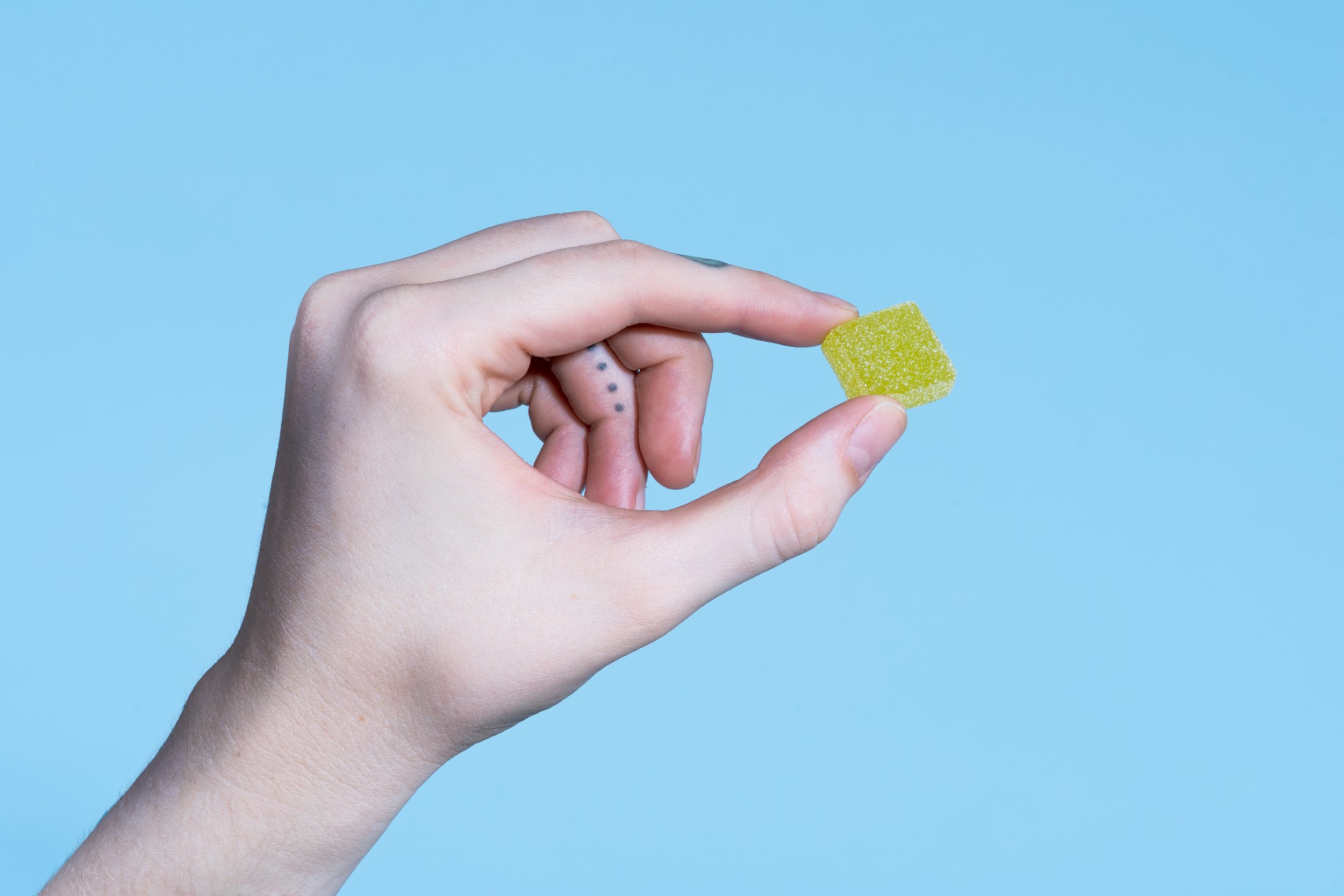Considerations When Developing A Cannabis Gummy
So you’ve decided to create a cannabis gummy. Well, you’ve got a lot to think about! Here we’ve mapped out the most important factors to consider when deciding on the perfect cannabis gummy for your brand.
Deciding On Your Base Formula
There’s a few things to consider when deciding on your base formula to ensure you get the perfect cannabis gummy that fits your brand. Think about what texture and consistency you’re looking for. Are you looking for a classic chew from gelatin which most people think of when they think of a gummy bear? This is one of the more popular choices but like anything, has its pros and cons. One pro is that it's thermoreversible, so if you mess up the batch, it can be remelted and potentially fixed. Unfortunately that means if your customers are purchasing your carefully dosed product and leave it in a hot car all day, they may come back to find the gummies have melted together. One way to mitigate this from happening is by adding some pectin into your gummy formula. Pectin when combined with gelatin gives it a higher melting point, so your gummies can maintain shape at higher temperatures. But If you’re looking for a vegan option that is non-thermoreversible, straight pectin is the most popular option for your base formula. Many consumers prefer a vegan option so using pectin may help reach a wider consumer base. The cons of using a pectin formula is once it sets, it cannot be remelted. It has a clean bite through texture, but none of the chew you find in gelatin based gummies. Another thing to consider is your bulk ingredients such as tapioca syrup or corn syrup. Both a syrup and a dry ingredient like cane sugar are required to control crystallization and can account for over 90% of your gummy formula. If you choose you can opt for organic versions of both your syrup and sugar choice or go for a sugar alternative such as allulose or fiber for your bulking agents to create a reduced sugar content gummy. Keep in mind these ingredients can impact costs significantly.
The Effects
In terms of cannabis gummies, it’s all about the feels, right? So you’ll need to decide on what effects you are trying to provide your consumers. If catering to the recreational market, consider the THC content to provide the desired psychoactive experience. For those seeking therapeutic benefits without the high, a CBD-dominant gummy might be more suitable.You can also further enhance these effects by adding terpenes or other minor cannabinoids such as CBN or CBG as well as supplements like melatonin or vitamins like b12. By combining various cannabinoids in different ratios you can achieve different effects so it’s a good idea to research prevailing consumer preferences and the potential medicinal applications of cannabinoids to align your product with market demands. Whether aiming for relaxation, focus, pain relief, sleep or a combination of effects, the key is to create a gummy that delivers a consistent and reliable experience. Keep in mind individual tolerance levels and the importance of transparency in labeling to help consumers make informed choices based on the desired effects of your cannabis gummy.
The Design
Crafting an attention-grabbing design for your cannabis gummy involves a blend of creativity, branding, and visual appeal. Consider incorporating vibrant and eye-catching colors that match the packaging you plan to use for each individual SKU. Utilize unique shapes on your gummy molds that set your gummies apart from the conventional and align with your brand. Always keep in mind, infusing the gummy with intricate details or patterns can add an extra layer of visual interest, but may not translate well to gummies, as fine details can get lost if the gummies are sugar coated or if there are any air bubbles that form in the manufacturing process. Another option for design is to have a multi-dose gummy that uses indentations to indicate where one dose starts and another ends. A custom design will make your product less likely to be imitated by others looking to make counterfeit versions of your product as well. Lastly, think about your coatings. Will your customers prefer sugar, sour sanded, wax or starch? Depending on which direction you choose, will impact the design legibility, and manufacturing process. A visually striking and well-thought-out design can not only capture attention on the shelf but also leave a memorable impression on consumers, fostering brand recognition and loyalty.
The Flavor
This is one of the most important aspects of your gummy so you’ll really want to think about your target audience and how you want to represent your brand. Consider popular flavor trends in the cannabis industry and explore unique combinations that set your product apart. Factor in the taste profile of the cannabis extract you're using, as it can influence the overall flavor. You could go all natural or add real fruit juice like the popular brand WYLD, and incorporate bitter blockers and masking agents if you don’t want consumers to taste the active. Or go the opposite direction and use extracts that have high terpene content like live resin or hash rosin for your edible connoisseur. You’ll always want to take into account the preferences of your target demographic – whether it's the sweet tooth of recreational users or the more health-conscious choices of wellness consumers.
The Color
When deciding between natural and artificial colors for your gummies, it's essential to weigh several factors that align with your brand values and consumer preferences. Natural colors derived from fruits, vegetables, or other plant sources appeal to consumers seeking cleaner, more health-conscious options. They contribute to a positive image of your product and may attract those who prioritize natural and organic ingredients. However Natural can be more expensive and some colors don't show well over time like blues and purples. In a low PH environment they tend to turn grey, losing all visual appeal to the customer. On the other hand, artificial colors offer a broader spectrum of vibrant and stable hues, allowing for more creative and visually striking gummy designs. They also tend to be lower in cost. Some consumers may have sensitivities to certain artificial colors, so consider potential allergies or dietary restrictions within your target market. Striking a balance between visual appeal and health consciousness is crucial; many successful products use a combination of both natural and artificial colors to achieve the desired aesthetic without compromising on perceived quality. Ultimately, understanding your target audience and the image you want to convey will guide your choice between natural and artificial colors for your gummies.


